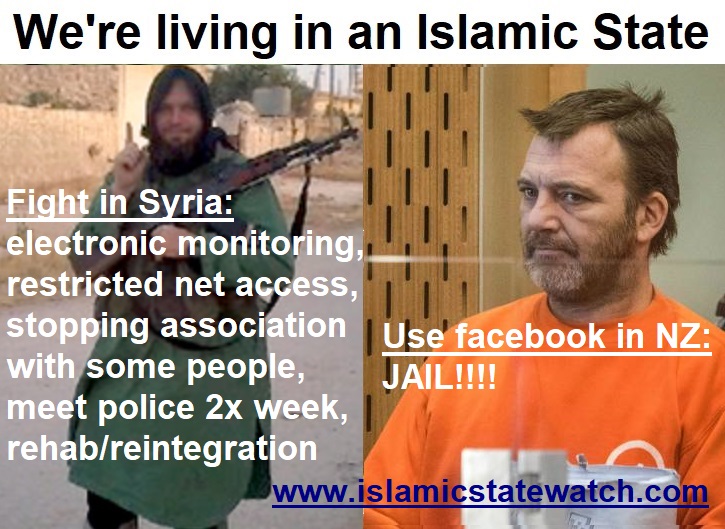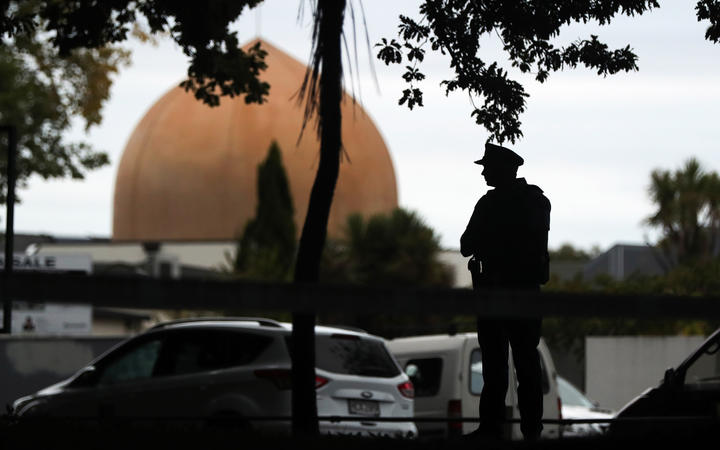Both the Christchurch shooting, and video that motivated it, are still available online.
See also: Dunedin mosque video that sparked Tarrant still available.


Dozens of recordings of a 2019 massacre in Christchurch, New Zealand, remain online, in a sobering reminder of the internet’s permanence.
The one-minute 30-second video offers an unnerving first-person view. A man strides across a parking lot. Then he raises a semiautomatic gun and fires at two people standing in a doorway. One falls, while the other tries crawling away before getting shot again.
The black-and-white clip was uploaded to Facebook on March 15, 2019. It was a partial recording of a livestream by a gunman while he murdered 51 people that day at two mosques in Christchurch, New Zealand.
For more than three years, the video has remained undisturbed on Facebook, cropped to a square and slowed down in parts. About three-quarters of the way through the video, text pops up urging the audience to “Share THIS.” The clip has amassed about 7,000 views and 22 comments, including some asking for it to be deleted.
Online writings apparently connected to the 18-year-old man accused of killing 10 people at a Buffalo grocery store on Saturday said that he drew inspiration for a livestreamed attack from the Christchurch shooting. The clip on Facebook — one of dozens that are online, even after years of work to remove them — may have been part of the reason that the Christchurch gunman’s tactics were so easy to emulate.
In a search spanning 24 hours this week, The New York Times identified more than 50 clips and online links with the Christchurch gunman’s 2019 footage. They were on at least nine platforms and websites, including Reddit, Twitter, Telegram, 4chan and the video site Rumble, according to The Times’s review. Three of the videos had been uploaded to Facebook as far back as the day of the killings, according to the Tech Transparency Project, an industry watchdog group, while others were posted as recently as this week.
The clips and links were not difficult to find, even though Facebook, Twitter and other platforms pledged in 2019 to eradicate the footage, pushed partly by public outrage over the incident and by world governments. In the aftermath, tech companies and governments banded together, forming coalitions to crack down on terrorist and violent extremist content online.
Yet even as Facebook expunged 4.5 million pieces of content related to the Christchurch attack within six months of the killings, what The Times found this week shows that a mass killer’s video has an enduring — and potentially everlasting — afterlife on the internet.
“It is clear some progress has been made since Christchurch, but we also live in a kind of world where these videos will never be scrubbed completely from the internet,” said Brian Fishman, a former director of counterterrorism at Facebook who helped lead the effort to identify and remove the Christchurch videos from the site in 2019.
To outwit some of the large platforms, which generally rely on artificial intelligence to take down toxic content, people have added watermarks or filters to alter the clips of the Christchurch attack or changed playback speeds of the recording, The Times found. Others started posting the web addresses of the videos instead of directly uploading the clips, to avoid detection by algorithms that match shooting videos to previously known versions. Other people uploaded the Christchurch videos to less popular hosting platforms with fewer content moderation rules.
If the Christchurch footage is any guide, the Buffalo attack is also likely to persist on the internet. The shooting spree was broadcast for less than two minutes on Twitch, the livestreaming site owned by Amazon, before it was cut off by the company. But that was enough for someone to record the bloodshed and for links to that recording to spread widely.
Those links have since shown up on Facebook, Reddit and Twitter. Videos of the Buffalo gunman’s attack have also been uploaded to Facebook, Twitter and WeChat, as well as sites like Rumble, Parler and Truth Social that are popular with right-wing users, according to experts and a review by The Times.
Many of the sites said they were working to remove the links and clips to the Buffalo killings, so they were unlikely to proliferate as widely as the Christchurch shooting clips. But even if the Buffalo footage on mainstream platforms might “reduce significantly,” it would “never disappear from the internet,” said Courtney Radsch, the U.S. representative to Article 19, an international human rights organization.
Facebook, which is owned by Meta, said that for every 10,000 views of content on the platform, only an estimated five were of terrorism-related material. Rumble and Reddit said the Christchurch videos violated their rules and they were continuing to remove them. Twitter, 4chan and Telegram did not respond to requests for comment.
The Christchurch attack showed up online on the afternoon of March 15, 2019, when the gunman began livestreaming the killings to his Facebook page.
Six minutes later, the first recording of the murders was uploaded to a file hosting site called Mega, according to an investigation by New Zealand’s Department of Internal Affairs. File hosting sites allow photos, videos and other content to be stored and then shared on other platforms.
By the end of that day, a recording of the full 17-minute livestream had been uploaded to dozens of other file sharing services, video streaming sites and social media platforms including Facebook, YouTube and Reddit.
Many of the sites tried taking down the videos as they were uploaded but were overwhelmed. Facebook said it removed 1.5 million videos in the 24 hours after the incident, though many managed to evade detection. On Reddit, a post featuring the video was viewed more than one million times before it was removed. Google said the speed at which the video was shared was faster than after any tragedy it had previously seen, according to the New Zealand government report.
Over the next few days, some people began discussing ways to evade the platforms’ automated systems to keep the Christchurch video online. On Telegram on March 16, 2019, people who were part of a group related to white supremacy batted around ways to manipulate the video so it would not be removed, according to discussions viewed by The Times.
“Just change the opening,” one user wrote. “Speed it up by 2x and the [expletive] can’t find it.”
Within days, some clips of the shooting were posted to 4chan, a fringe online message board. In July 2019, a 24-second clip of the killings also appeared on Rumble, according to The Times’s review.
In the ensuing months, New Zealand’s government identified more than 800 variations of the original video. Officials asked Facebook, Twitter, Reddit and other sites to dedicate more resources to removing them, according to the government report.
New copies or links to the video were uploaded online whenever the Christchurch shooting came up in the news, or on anniversaries of the event. In March 2020, about a year after the shooting, nearly a dozen tweets linking to variations of the video appeared on Twitter. More videos appeared when the gunman was sentenced to life in prison in August 2020.
Other groups jumped in to pressure the tech companies to erase the video. Tech Against Terrorism, a United Nations-supported initiative that develops tech to detect extremist content, sent 59 alerts about Christchurch content to tech companies and file hosting services from December 2020 to November 2021, said Adam Hadley, the founder and director of the group. That represented about 51 percent of the right-wing terrorist content the group was trying to remove online, he said.
“One video can have gigantic reach, and not noticing or a failure to act can make it a very popular node,” Mr. Hadley said. “Terrorist actors know this and try to seed it over as many platforms as possible.”
Despite the vigilance, at least nine videos with Christchurch footage appeared on Gab, another fringe site, in 2021, according to the review by The Times. Some were narrated by conspiracy theorists who posited that the shooting had been staged.
In an email, Andrew Torba, Gab’s chief executive, said of the Christchurch posts, “Listen woman, I don’t control content hosted on third-party websites. People will always find a way to share content online.”
People also increasingly posted links of the attack to video-hosting sites such as BitChute and Rumble. Those links made the videos easier to pass around on Facebook, Twitter and Telegram and could not be detected as easily as videos uploaded directly to these platforms. Some versions of the video on BitChute were viewed tens of thousands of times.
Rumble removed three copies of the Christchurch video after being contacted by The Times this week.
After the attack on Saturday, several links to the Christchurch massacre appeared online again. On Twitter, some users who commented on the Buffalo news asked where to find videos of the New Zealand killings.
“You can find it all over Twitter,” one user replied, adding a kissing face emoji.
The Enduring Afterlife of a Mass Shooting’s Livestream Online


